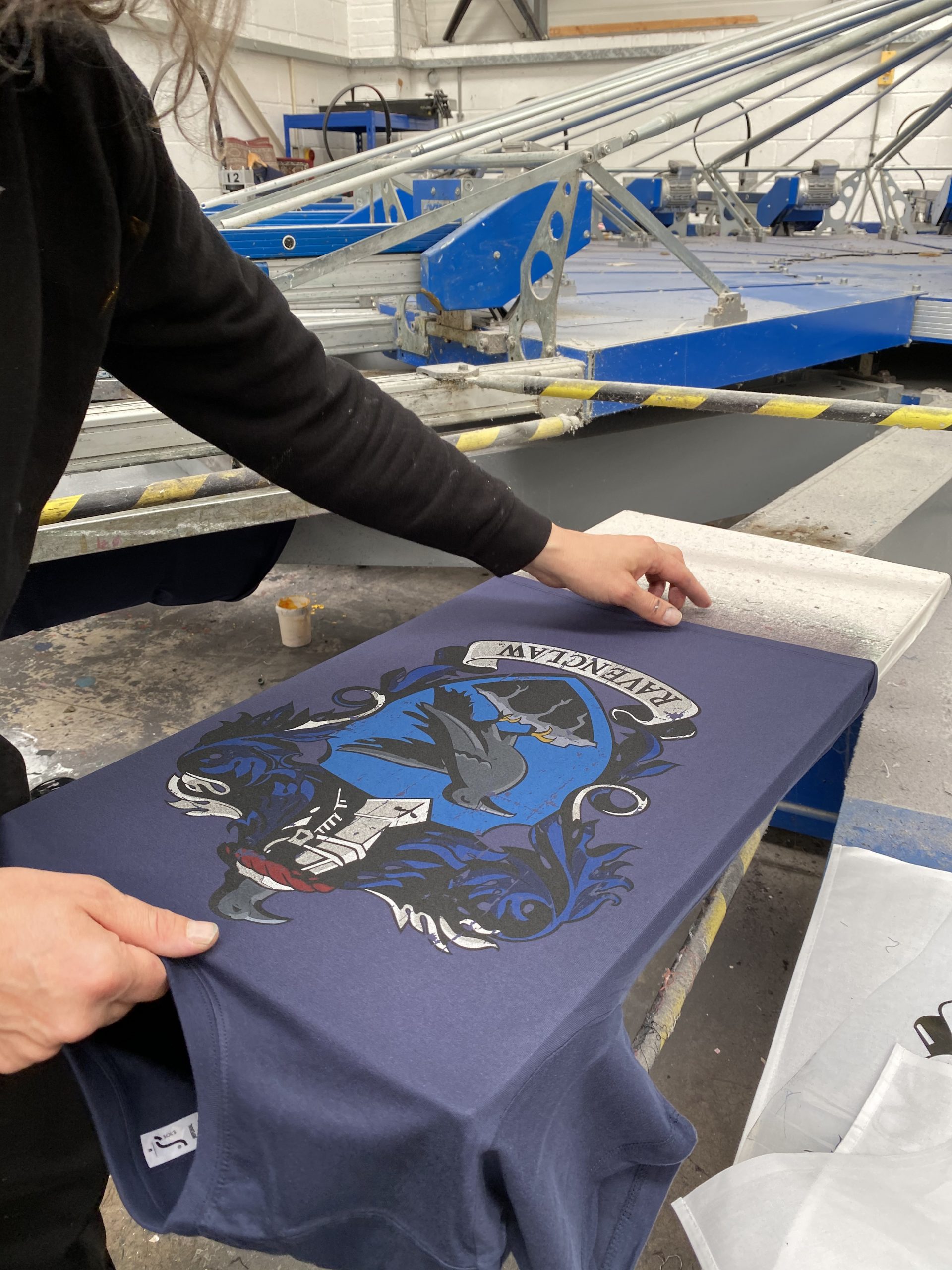ChatGPT said: 10:9 Design Company FAQs: answers to your top questions about their services
The Crucial Overview to Comprehending Screen Printing and Its Versatile Makes use of
Screen printing has an abundant background that dates back to old times, evolving into an advanced method used throughout various sectors today. This overview discovers the details of the screen printing process, describing its applications in style, advertising, and home design - 10:9 Design reviews. Comprehending these principles can open creative capacity for both business and creative jobs. The following sections will certainly reveal vital tips and strategies to enhance one's screen printing endeavors
The Background of Screen Printing
Although screen printing has origins that trace back centuries, its advancement shows the technological and creative developments of numerous societies. Stemming in old China, the strategy was at first made use of for decorating textiles and later spread to Japan, where it became important to Ukiyo-e woodblock printing. The technique moved to Europe in the 18th century, where it obtained appeal amongst artisans and industrial printers. The development of photo emulsion in the 20th century transformed screen printing, enabling for even more elaborate designs and higher efficiency. Musicians like Andy Warhol further moved its appeal, using the medium to create renowned jobs that blended commercialism and fine art. By the late 20th century, screen printing had developed itself as a flexible technique, employed in style, advertising and marketing, and fine art. Today, it proceeds to progress, integrating digital modern technology and expanding its applications across numerous industries.
The Screen Printing Refine Explained
Screen printing changes imaginative visions into concrete designs with a series of exact steps. Originally, a picture is produced and after that transferred onto a screen, normally constructed from fine mesh textile extended over a framework. A light-sensitive solution is put on the screen, which is subjected to light, hardening in areas not covered by the picture. After cleaning out the unhardened solution, a pattern is developed.
Next off, the screen is placed over the substrate, whether it be fabric, paper, or another material. Ink is then pressed through the open areas of the pattern using a squeegee, transferring the design onto the substratum listed below. This process can be duplicated for multiple shades, requiring different screens for each hue. Finally, the published product is treated utilizing warmth to guarantee the ink sticks properly, causing a sturdy, dynamic design on-line.
Sorts Of Screen Printing Techniques

Furthermore, specialty techniques, such as discharge screen printing, remove color from the textile to create softer prints, while foil screen printing uses metallic aluminum foil to achieve a glossy coating (10:9 Design Texas). Each method provides distinct qualities, accommodating different imaginative needs and manufacturing ranges, eventually broadening the opportunities within the screen printing domain name
Applications of Screen Printing in Various Industries

Additionally, the signs and marketing sectors utilize screen printing for producing captivating screens and banners. This method enables vibrant shades and elaborate layouts that catch attention. In electronic devices, screen printing is used for applying conductive inks to circuit boards, important for component links. In addition, the home decoration industry welcomes screen printing to create distinctive styles on fabrics and wall surface art. On the whole, screen printing acts as a crucial device across diverse areas, enhancing items with customized and aesthetically attractive graphics.
Tips for Successful Screen Printing Projects
While taking on a screen printing job, mindful interest to information can substantially enhance the last outcome. First, choosing high-grade materials is crucial; this includes the screen, inks, and substratums. Making use of appropriate mesh counts can impact ink deposition and information resolution. Preparation is similarly crucial; thorough cleaning of screens and correct direct exposure times guarantee crisp prints.
Next, exact registration is important for multi-color prints. Making use of placement tools can assist accomplish exact layering. Additionally, testing prints on scrap materials prior to production assists identify prospective problems without losing resources.

Often Asked Inquiries
What Materials Are Ideal for Screen Printing on Fabric?
Cotton and polyester blends are suitable for screen printing on fabric because of their resilience and ink absorption. In addition, specialty materials like silk or canvas can produce special structures and coatings, improving the total design high quality.
Exactly how Do I Tidy and Maintain Screen Printing Equipment?
To clean and preserve screen printing equipment, one must routinely wash displays with ideal solvents, inspect squeegees for wear, oil moving parts, and store all products in a completely dry, dust-free setting to prolong their life expectancy.
What Are the Environmental Influences of Screen Printing?
Screen printing can have substantial environmental effects, consisting of chemical waste from solvents and inks, water use throughout cleansing procedures, and power consumption. Sustainable methods and eco-friendly products are essential for minimizing these negative effects.
Can Screen Printing Be Done at Home Effectively?
Screen printing can be efficiently done at home with the best materials and techniques. Hobbyists can develop top quality prints, though success relies on their ability level, equipment, and understanding of the process involved.
What Are the Prices Connected With Beginning a Display Printing Service?

Beginning a screen printing service involves prices for devices, materials, and work area. First expenses commonly range from a few hundred to a number of thousand dollars, relying on the scale, top quality of machinery, and wanted production ability.
Screen printing has a rich history that dates back to ancient times, advancing into here an innovative method made use of across numerous industries today. An additional technique, rotating screen printing, utilizes round screens, promoting constant printing on textile rolls, thus boosting effectiveness for large productions. Furthermore, specialty strategies, such as discharge screen printing, eliminate color from the fabric to produce softer prints, while aluminum foil screen printing applies metallic aluminum foil to achieve a glossy finish. In the fashion sector, screen printing is extensively made use of to create lively layouts on apparel, allowing brand names to display their unique styles. Cotton and polyester blends are excellent for screen printing on fabric due to their sturdiness and ink absorption.